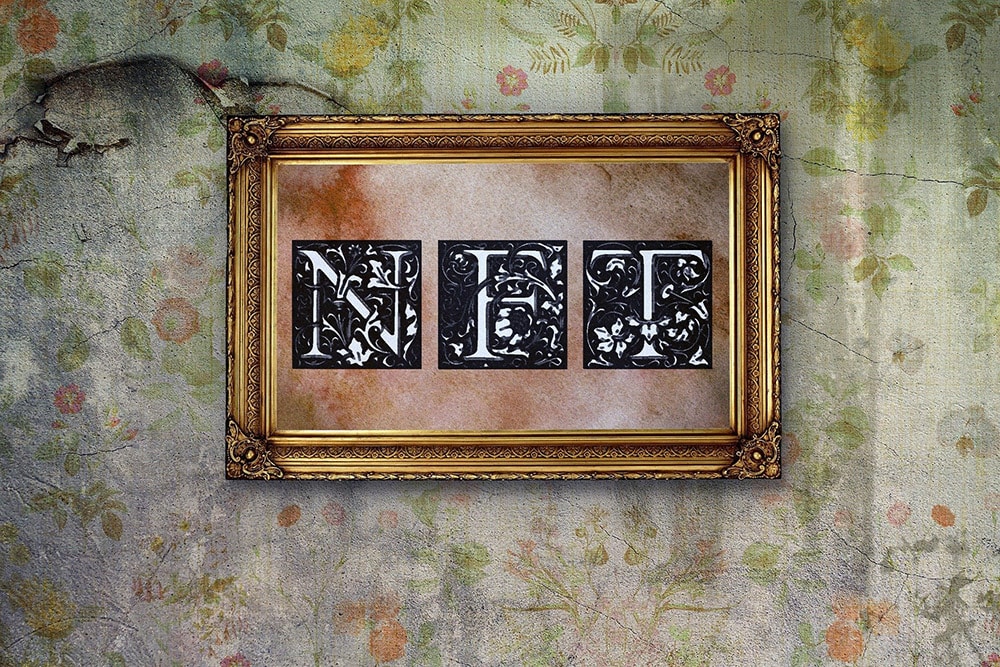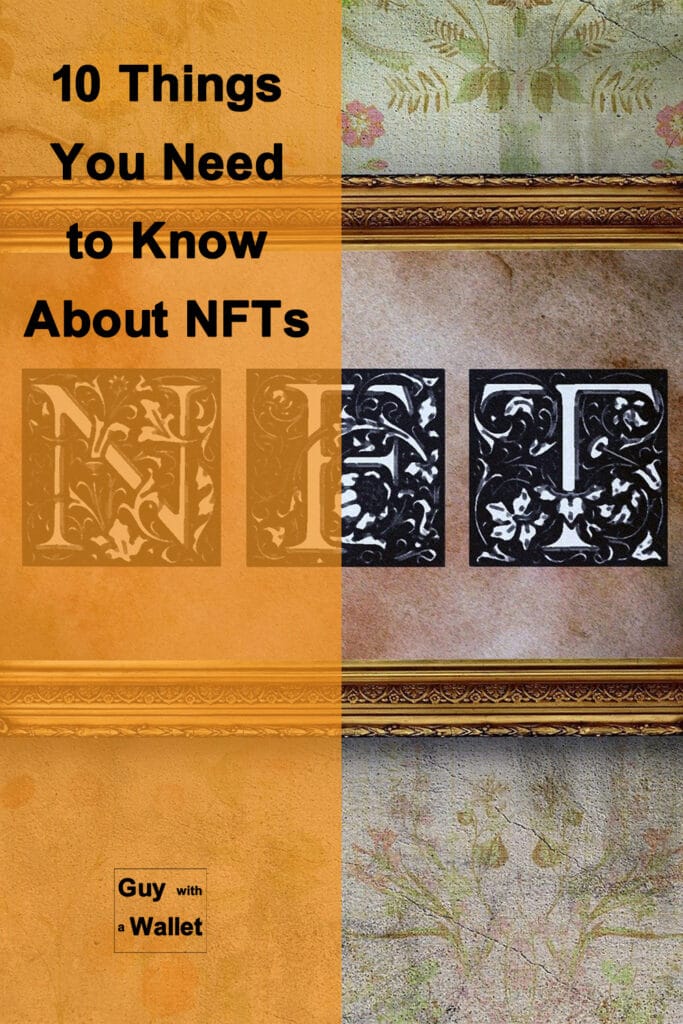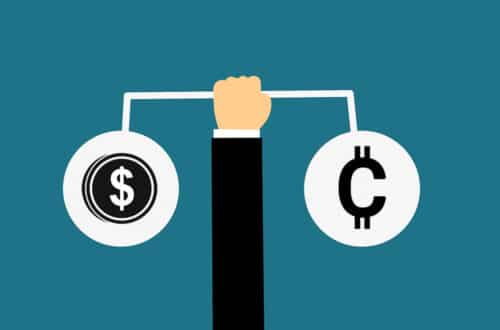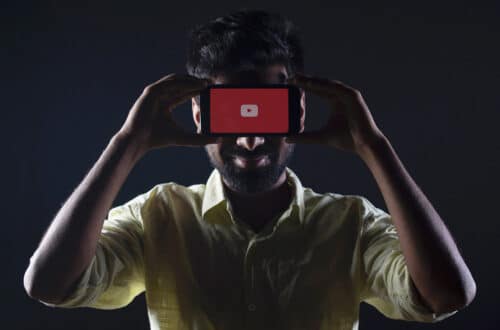
10 Things You Need to Know About NFTs
NFTs are all the rage right! And have been for months. But many people still don’t know much about them. That’s why in this post, I’m going to try to give you all the necessary information about them. So if you want to mint or buy an NFT, you should stick around till the end.
Note: To understand this post better, I recommend reading our guide to the blockchain and guide to cryptocurrencies first.
What Are NFTs?
NFT is an abbreviation for “Non-fungible Token”. But what does that mean? Fungible means interchangeable or replaceable. For example, our fiat currencies are fungible. So if I had a 10 dollar bill and you also had a 10 dollar bill, our dollar bills would be exactly the same in terms of value and usability. And if we exchanged them with each other, none of us would lose or gain anything. Things that you can buy in bulk in stores are another example of fungible things.
Non-fungible is the opposite. For example, if I painted something, I would have a non-fungible piece of art. And even if someone tried to copy this painting, the original still would be the original and very noticeably so. There are many copies of the “Mona Lisa”, but there’s only one original.
I have explained the concept of token in this post. But to summarize, most blockchains have their own native currency which is called a coin. But there can be other applications and networks that are built on top of these blockchains. And if these projects wanted their own form of currency, they could have tokens.
One other difference between coins and tokens is that tokens can represent other things as well, like proof of ownership in case of NFTs. But there’s one important thing that they have in common: they both work on the blockchain. Which means that there are immutable and uncensorable records of every transaction that uses them. (If you don’t quite understand how blockchains work, I’ve explained it here.)
So NFTs are proofs of ownership that can’t be duplicated and live on the blockchain.
How are NFTs Created?
If you want to create or mint an NFT, you need to choose a platform first. Then you will connect your crypto wallet, upload your digital file and mint your NFT on the blockchain that you want. Each platform will have some additional features and options like minting on different blockchains or additional locked content for buyers. So do some research beforehand, if you want to mint something.
Each platform will have its own guide for people who want to use it. So I’m not gonna go into detail here.
Some facts about NFTs
1. The Copyright Issue
When an artist mints a piece of art as an NFT and sells it, he/she isn’t selling the complete ownership or the copyright to that artwork. So when you buy an NFT, you’re basically buying a digital file and the proof that you own that file which lives on the blockchain. This means that if you buy some artwork as NFT, you can sell that NFT to others but you can’t put it on t-shirts that you sell, for example. Because you don’t own the copyright.
2. You Are Reliant on the Platforms
As I said earlier, the NFT that you buy or mint is basically a token on the blockchain and the digital file is stored on the platform that you’ve bought the NFT from or minted it on. Because right now, it’s very hard to store big files on a blockchain.
One of the oldest and biggest NFT platforms is OpenSea for example. And when you buy, sell or mint on OpenSea, you get a token in your crypto wallet but the actual digital file of the artwork stays on OpenSea’s servers.
So if for some reason, the NFT platform goes down, you won’t even have the file.
3. NFTs Are Not Just Linked to JPG Files
NFTs can represent ownership of many things. Right now, this market is focused on art. This art can be a photograph or graphic design or even a piece of music. But in the future, we may go towards tokenized economics, where the ownership of physical assets is also tokenized. We don’t have the needed infrastructure yet, but we’ll get there at some point. Which is quite exciting!
4. A Great Way to Support your Favorite Artists and People
When I first heard about NFTs, I was immediately excited about what they could do for independent artists. If you’ve pursued any kind of art as a career, you know how hard it is to monetize your art and how little you make as a creator versus a broker or agency.
Artists who have dedicated fans, can use NFTs to monetize their art in an awesome way. They get to live off of their passion and their fans get to feel closer to them and support their work.
5. Some NFTs Have More Than Just a File Attached to Them
Some NFT platforms let you add some additional content to your artwork that only the buyer can see. And some artists and brands use this feature to provide some additional value to their buyers. For example, a photographer can give the buyers a link to download a printable version of his/her photograph or a discount code to buy a photography course, etc.
6. There Can Be a Fixed Royalty
When someone mints an NFT, he/she can choose to take a cut from every future sale of that particular NFT. So I can mint an NFT, put it up for sale for any price that I want and also choose to take a 10 percent royalty payment off of any future sale of that NFT. In this example and if my NFT sells, I would first make the price that I had put on it. And then if the buyer sells it in the future for another price, I would make 10 percent of that. This cycle can go on forever. Another reason for artists to make use of NFTs to monetize their work.
7. Most NFTs will not Make You a Millionaire
Most of the hype that we see in this space is because of the huge returns on investments on some projects. But if you want to buy NFTs just to make huge profits over night, you should know that you may lose all of your money if you haven’t picked the right NFT. So be careful and don’t gamble your future on some off chance of becoming a millionaire overnight.
8. Beware of the Gas Fees
Right now, most of the NFT activities happens on the Ethereum blockchain. And on this blockchain, you may have to pay up to hundreds of dollars in gas fees for minting, buying and selling. There are other blockchains that you can use to reduce or even eliminate gas fees. And you can strategize to reduce your ethereum gas fees as much as possible. But in all cases, you should definitely consider this when dealing with the NFT market.
9. Duplication vs. Copying
NFTs can’t be duplicated. But right now, they can easily be copied. This makes a huge problem that needs to be solved in the future. For example, I can mint a photograph as an NFT. Once it’s minted and the token has been issued and validated on the blockchain, it can’t be duplicated. No one else can have that specific NFT, unless I sell it to them. But someone can save the JPG file of my photo and mint it again. This can have ramifications for the copier. But the potential problem for the rest of us is so much bigger.
10. The Reason for the Value of NFTs
In our guide to elasticity, we said that goods and services with inelastic supply can be good investments. One other way of saying this is “scarcity usually means higher prices”. And the way the NFTs work, they can create this kind of scarcity or inelastic supply digitally. This is the main concept behind their potential value.
Last Words
We really need a good decentralized platform for minting and trading NFTs. Because here’s the realty: centralized platforms can take away everything good about NFTs if they wanted to; as they have before, by deleting normal people’s accounts -without any prior notification- just because they lived in a certain country.
Pin It!

Your Turn
If you have any experience with NFTs, comment below and share it with the group!
And if you’ve found this post to be useful, share it on social media and with your friends.
***Last Updated on 31 March 2022 by Hamed Derakhshani (Guy with a Wallet)




